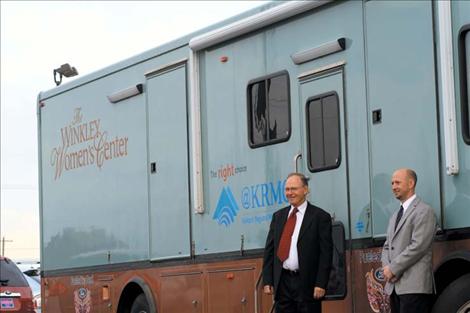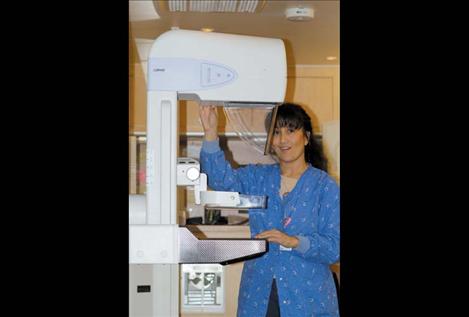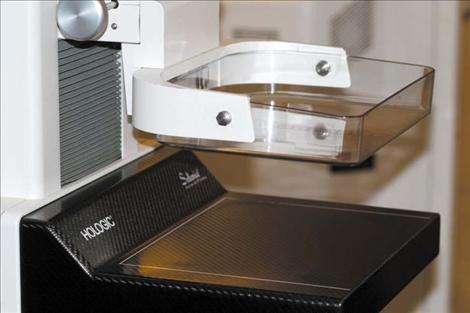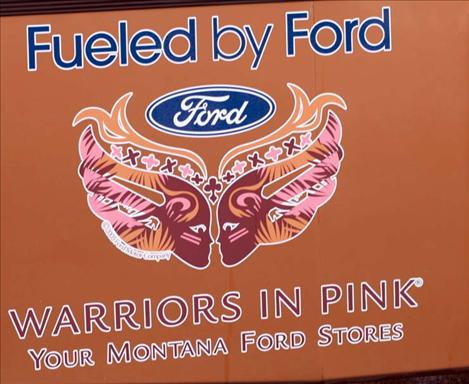Ronan woman makes life-saving investment
Hey savvy news reader! Thanks for choosing local.
You are now reading
1 of 3 free articles.
RONAN — According to Mission Valley resident Jane Winkley, women living in rural Montana often have a difficult time gaining access to preventative medical care like ultrasounds and mammograms. Some live nearly 250 miles from the nearest hospital and simply do not have the means to travel the distance required to gain access to these life-saving procedures. Instead, they simply go without and hope for the best.
“These women have to travel 250 miles for a mammogram, 250 miles home and then wait a week for the results. If there’s a problem, they have to go somewhere else to have it taken care of,” she said.
Worse, many of the small town hospitals where these tests are performed still use analog screenings rather than the new, easier to read digital format.
Winkley said that in a town like Browning, mammograms were recorded on film and placed in an envelope with the person’s name and the date. These mammograms were left in a pile until someone happened to be traveling from Browning to Kalispell where a radiologist could interpret the screening.
“The woman on the bottom of that pile could have been sitting there for six months,” Winkley said. “Anybody with a lump who doesn’t know where their mammogram was — I’d be crazy within two weeks. I don’t know how you last six months.”
But Winkley changed all that.
In 2006, Winkley’s husband passed away. On their wedding day, she and her husband were each given 150 shares of Proctor and Gamble stock. After 43 years, the stock was worth quite a bit of money.
Winkley was faced with a choice — pay the IRS a massive amount of money, or invest it all in a nonprofit organization. While trying to decide where the money should go, Winkley’s friend Tagen Vine stopped by her house to help her with a few chores. While helping to hang a quilt on the wall, Vine, president of the Kalispell Regional Healthcare Foundation, told Winkley about a new, “firebrand” radiologist at Kalispell Regional, Dr. Debra Wade.
Wade was responsible for reading mammograms and determining whether or not there was a problem. Her job included reading tests from rural areas of Montana, like Browning. Because these were not digital mammograms, Wade couldn’t read the tests. Furious, she burst into her boss’s office and demanded an alternative.
“Dr. Wade recognized that the screening rates were drastically disproportionate to the population,” Vine said. “She realized that people weren’t coming to us, so we had to go them.”
The plan involved building a custom-made, 40-foot-long van filled with diagnostic equipment. Having found the worthwhile cause she was looking for, Winkley donated just shy of $1 million to build the van and another $500,000 to secure funding for the Kalispell Regional Hospital’s Advanced Life Support and Emergency Rescue Team.
The van hit the road March 25, 2008. Complete with a bone density machine, ultrasound and digital mammography, the coach travels through all rural areas of Montana and offers free preventative screenings to one and all. Stops include St. Ignatius, Cut Bank, Browning, Chester, Conrad and Malta, to name a few.
In addition, the van has a satellite linkup that allows doctors in Kalispell to read a mammogram just seconds after it’s taken. The radiologist is on the phone with the patient while reading the mammogram. If everything checks out, the patient is given a clean bill of health and doesn’t have to return for a full year. If there is an issue, the radiologist will order an ultrasound and again view the results in real time.
“If I’ve never done anything else in my life, I think I’m really proud of this one,” Winkley said. “If we saved one life, it was worth it.”
Winkley’s philanthropic efforts have saved far more than one life.
Lead mammographer at Kalispell Regional Hospital, Niccole Caban, said she’s worked in five different states and never seen a coach that is set up to do so many different things.
Caban said as of August, the coach had traveled 130,000 miles, given 10,632 mammograms, 971 breast ultrasounds, and confirmed at least 58 breast cancers within the early stages, giving these women a fighting chance. The actual number of confirmed breast cancers is probably much higher, as Caban only tracks those who receive treatment at Kalispell Regional, but “it doesn’t matter if it’s one or two versus 58 — it’s wonderful,” she said.
Sam Offman has been driving the coach for nearly five years. He was a resonator therapist for 25 years and switched careers to become a truck driver. His background in both fields made for a good fit with the coach, but he wanted to stress that he doesn’t perform the mammograms — the coach retains a female nurse for that purpose.
“The patients who we found a problem and were able to help, those are the ones you remember. That’s a rewarding part for sure,” he said.
A few months ago, the coach received a $25,000 grant from the Ford Motor Company Fund — a goodwill operation in which Ford Motor Company gives money to Ford dealers throughout the nation to be levied toward a charity of their choosing. In the Northwest, it was decided that the money would go toward supporting coaches for mammography.
Gordon Henricksen, president of Don Aadsen Ford in Ronan, employed Winkley’s husband in the years before his passing. When he heard about the work she had been doing with the mammogram coach, he informed the board members of Operation Goodwill and put them in contact with Winkley.
“I thought it was a good cause and wanted to see if we could make it work,” Henricksen said.
The $25,000 will go toward general operating funds for the bus, helping to keep it on the road and saving lives for the foreseeable future.
“It’s having quite an impact to be able to reach out to those communities,” Vine said. “It’s a new collaborative model of hospitals and clinics working together to solve community problems.
“This is a prime example of what can be achieved when there’s a vision and there’s a passion.”



















